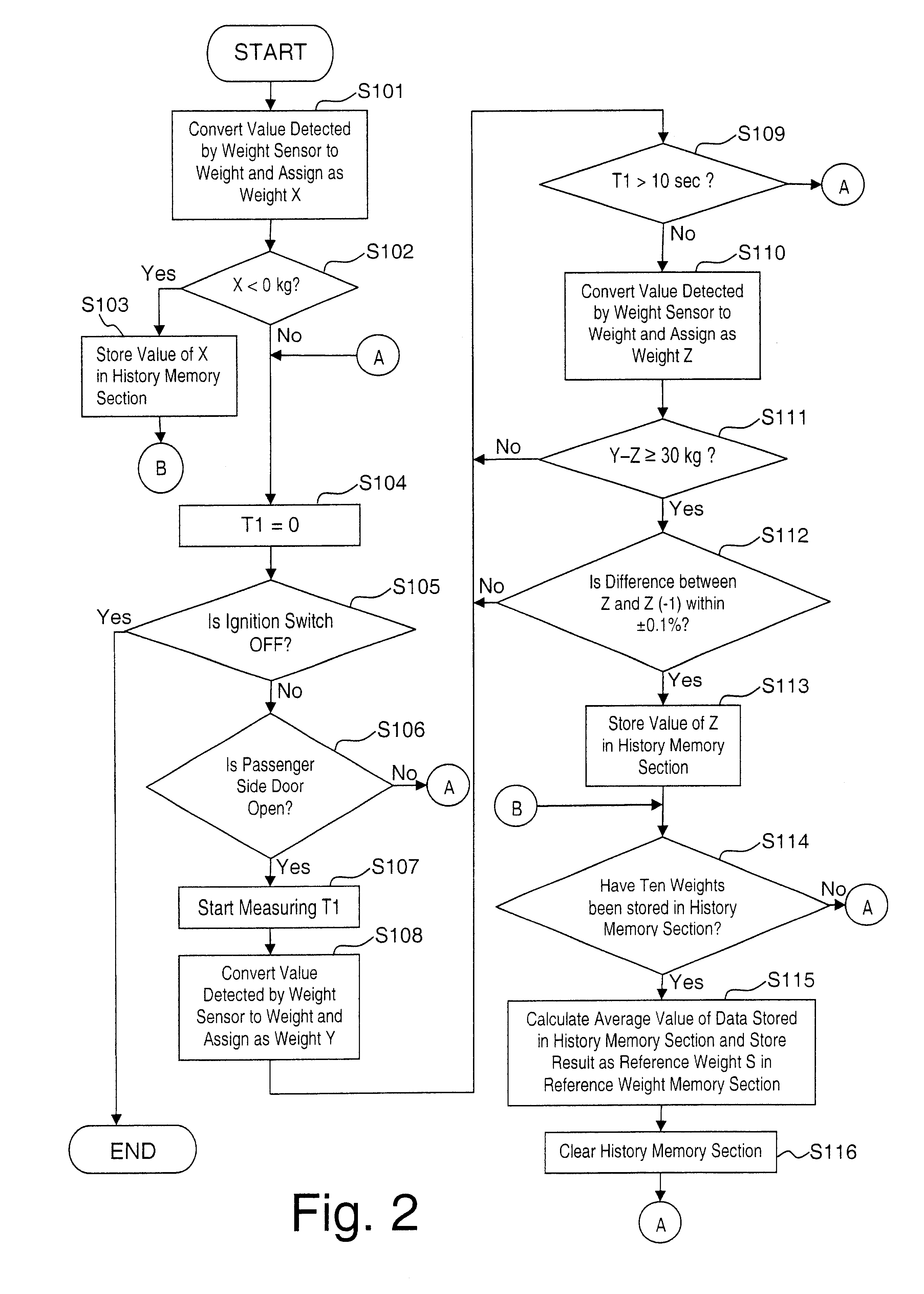Passenger detection system
a technology for passing and detection systems, applied in the direction of vehicular safety arrangements, electric devices, process and machine control, etc., can solve the problem that the passenger detection system will not be able to accurately determin
- Summary
- Abstract
- Description
- Claims
- Application Information
AI Technical Summary
Benefits of technology
Problems solved by technology
Method used
Image
Examples
Embodiment Construction
Referring now to FIGS. 4 and 5, a passenger detection unit 1' in accordance with a second embodiment will now be explained. In view of the similarity between the first and second embodiments, the parts or sections of the second embodiment that are identical to the parts or sections of the first embodiment will be given the same reference numerals as the parts of the first embodiment. Moreover, the descriptions of the parts of the second embodiment that are identical to the parts of the first embodiment may be omitted for the sake of brevity.
Referring initially to FIG. 4, a block diagram of the passenger detection unit 1' is illustrated in accordance with this second embodiment of the present invention. As shown in FIG. 4, the passenger detection unit l' of this second embodiment adds an ignition switch change detecting section 15 to the passenger detection unit 1 of the first embodiment shown in FIG. 1.
The ignition switch change detecting section 15 is equipped with an internal seco...
PUM
 Login to View More
Login to View More Abstract
Description
Claims
Application Information
 Login to View More
Login to View More - R&D
- Intellectual Property
- Life Sciences
- Materials
- Tech Scout
- Unparalleled Data Quality
- Higher Quality Content
- 60% Fewer Hallucinations
Browse by: Latest US Patents, China's latest patents, Technical Efficacy Thesaurus, Application Domain, Technology Topic, Popular Technical Reports.
© 2025 PatSnap. All rights reserved.Legal|Privacy policy|Modern Slavery Act Transparency Statement|Sitemap|About US| Contact US: help@patsnap.com



